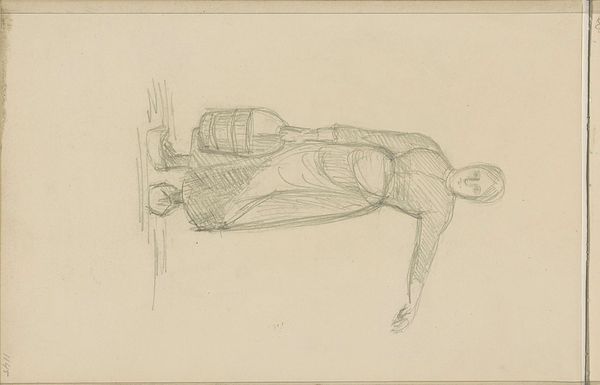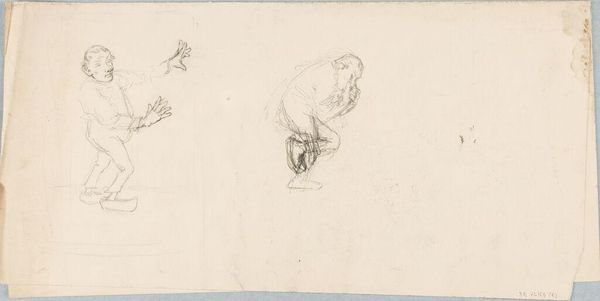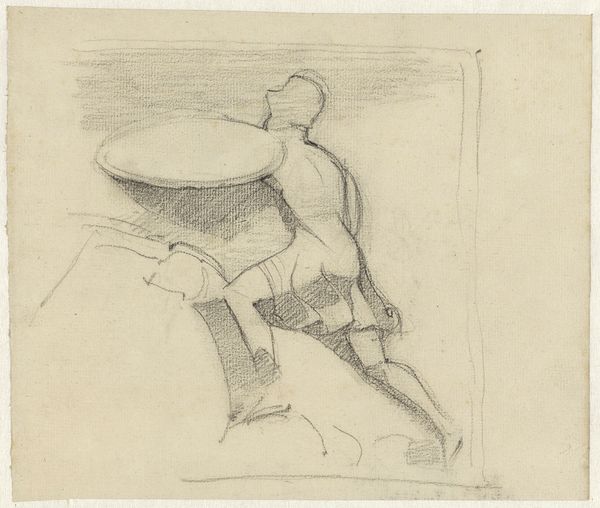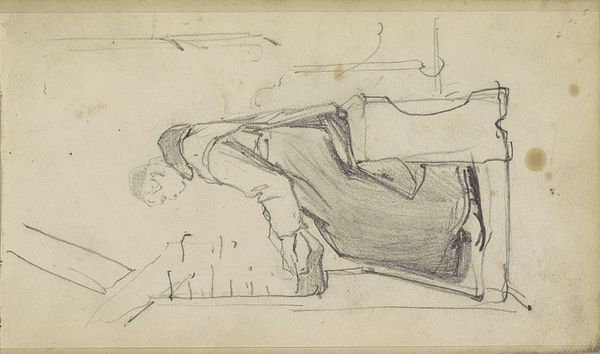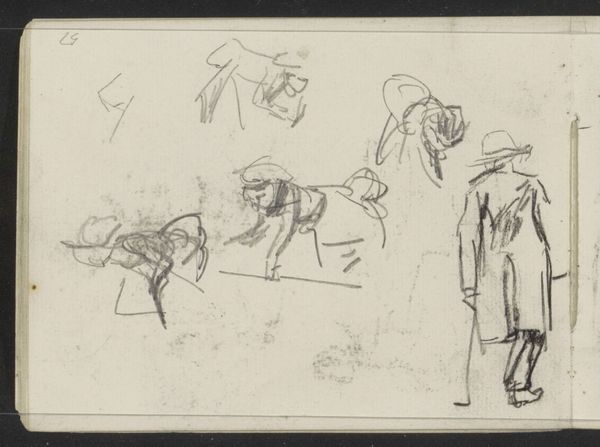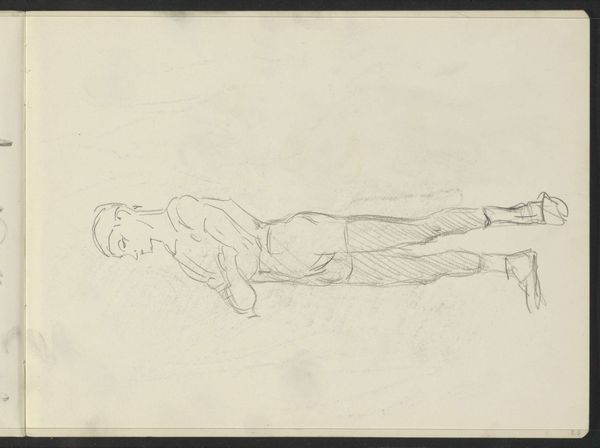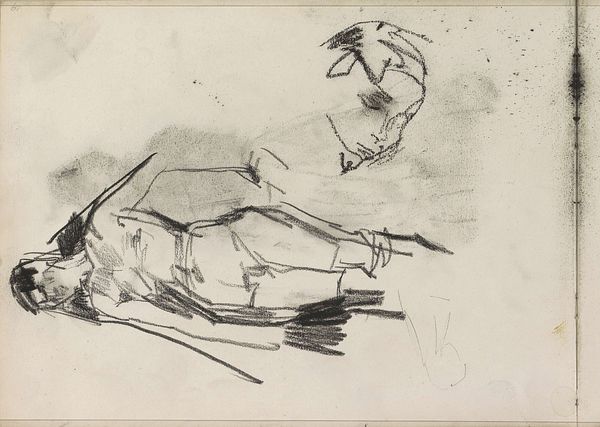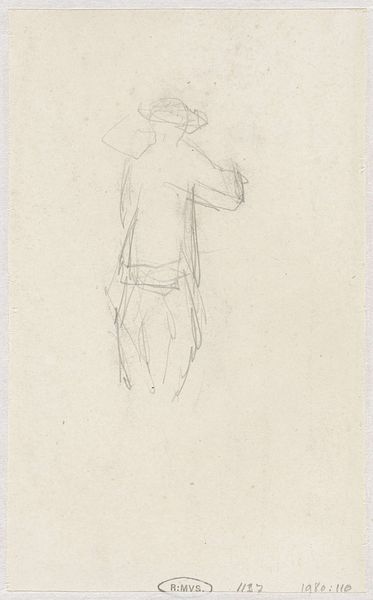
drawing, paper, pencil
#
portrait
#
drawing
#
pencil sketch
#
figuration
#
paper
#
geometric
#
pencil
#
line
#
modernism
Dimensions: height 91 mm, width 151 mm
Copyright: Rijks Museum: Open Domain
Curator: Welcome to the Rijksmuseum. We are looking at a drawing by Leo Gestel titled "Wielrenner," which translates to "Cyclist," dating from 1891 to 1941. It's rendered in pencil on paper, giving it a very immediate and raw feel. Editor: It strikes me as very fragmented, almost ghost-like. The cyclist is barely there, just a few lines suggesting the posture and the movement. It's dynamic yet incredibly vulnerable. Curator: Gestel was deeply engaged with the avant-garde movements of his time. He transitioned from impressionism to cubism, expressionism, and even periods of abstraction. His diverse range of art indicates he felt comfortable experimenting with many modes of expression. Editor: Absolutely. This sketch reads to me as a nod to modernism's fascination with motion and the human form stripped to its essence. It seems to parallel some early futurist sketches and their attempt to capture movement. Who is this figure, why a cyclist, and during what social, economical, or political moment did Gestel make the drawing? Curator: Unfortunately, that's tough to determine precisely. The date range is rather broad. However, cycling was becoming increasingly popular as a recreational activity and mode of transportation during the late 19th and early 20th centuries, democratizing movement in novel ways, so the cyclist embodies modern innovation and personal emancipation. Editor: And I think there's a layer there related to labor. Look at the visible notes and calculation markings. You see a very human, very casual portrayal in a very manufactured product. Curator: It reminds us that Gestel, like many modern artists, was interested in portraying contemporary life. Even something as mundane as a cyclist could become a subject worthy of artistic exploration. Editor: It definitely asks us to consider not only the advancements and societal implications of cycling culture, but to consider what stories these figures were trying to outpace as they fought for freedom. Curator: Indeed. This drawing allows us to see how artists were engaging with the changing world around them and inviting the viewer to see ordinary moments in a different way. Editor: Exactly. Seeing "Wielrenner," even in its preliminary sketch-like state, provides us insight on what liberation really looks and feels like in a time of immense societal upheaval.
Comments
No comments
Be the first to comment and join the conversation on the ultimate creative platform.
